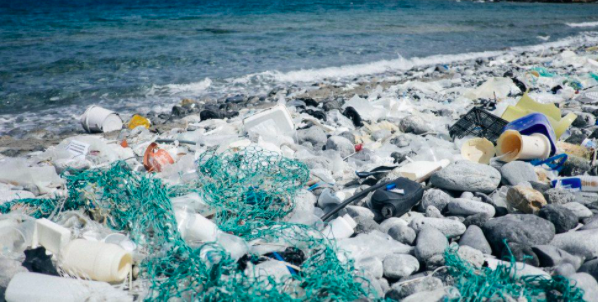“Seaspiracy” provides viewers a look into the frightening reality behind ocean pollution

“Seaspiracy” delves into the environmental impact behind fishing and whaling.
April 26, 2021
The Netflix original documentary “Seaspiracy,” provides a perfect balance of education and adventure, keeping me hooked to the very end. Unlike other movies that aim to play out a frightening alternate reality, this film is anything short of fantasy. While this can be scary for some viewers, the message addressed is unquestionably worth viewing to hear an unsettling but inevitable truth.
The director and filmmaker, Ali Tabrizi, was eager to make a film on the magnificence of the oceans, but his research revealed much more about how our oceans are being threatened. During his extensive exploration, he discovered that whales were washing up onto beaches with plastic inside of them. Determined to make a difference, Tabrizi went to countless beaches picking up plastic, although he was unsure if that was the most effective way to help save marine life.
In June of 2019, Japan announced that they would resume commercial whale hunting in Antarctica and withdraw from the International Whaling Commission. After hearing this, Tabrizi explored further, finding that several countries had continued to hunt whales even though there had been an international whaling ban since 1986.
Committed to finding out if plastic or the fishing industry were a bigger threat to the ocean and the environment, Tabrizi and his wife Lucy took “Seaspiracy” viewers on an adventure to Taiji, Japan, Hong Kong and Liberia to find the truth.
This film brought awareness to many issues most people do not even know exist. The film is so strongly documented and well executed that it made me question if I should ever eat seafood again. The data, which is presented in the form of news article clippings, videos, images and infographics help viewers get a clear picture of the evolution of this problem.
Tabrizi makes serious accusations throughout the film against the commercial fishing industry including fraud, slavery and murder, but is able to prove the statements’ validity through subsequent information that is shown in the film.
Tabrizi also interviewed a number of scientists, marine biologists, activists, conservationists, oceanographers, explorers and environmentalists who backed up his claims. Furthermore, his information is supported by reliable sources like The New York Times.
This film is anything but a boring, educational exercise. It develops like a mystery and its pace and fact-finding narrative make it an exciting, compelling film to watch. Tabrizi’s close encounters with the police and angry fisherman unwilling to be recorded make the viewer realize how dangerous exposing these issues truly is. This discovery is what makes this documentary all the more meaningful while understanding the lengths Tabrizi went to for the truth.
While the film does include images of harming animals which may be disturbing for some viewers, those videos only prove how humans harm marine life. Despite these moments of discomfort, I was glad I watched the film and believe that everyone who cares about the planet and the animals who inhabit it should watch too.







